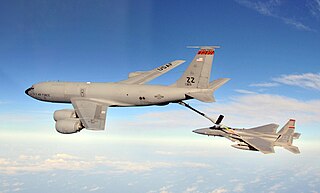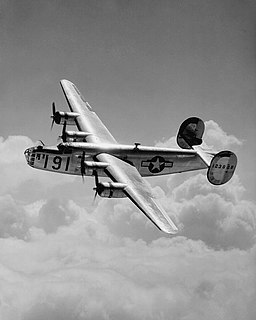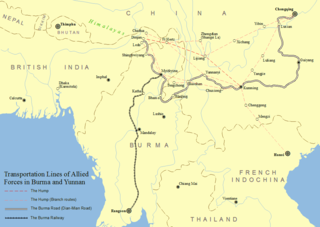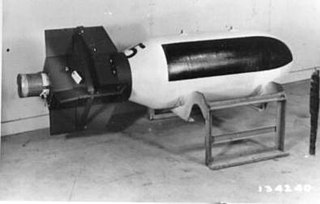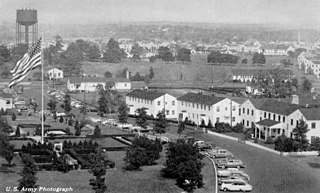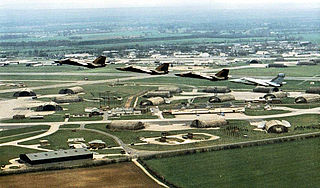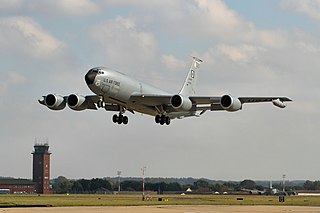
The 19th Airlift Wing is a United States Air Force unit assigned to the Air Mobility Command's Eighteenth Air Force. It is stationed at Little Rock Air Force Base, Arkansas. The wing is also the host unit at Little Rock.

The 2d Bomb Wing is a United States Air Force unit assigned to the Air Force Global Strike Command and Eighth Air Force. It is stationed at Barksdale Air Force Base, Louisiana. The wing is also the host unit at Barksdale. The wing was assigned to the Air Force Global Strike Command in February 2010 as part of the reassignment of Eighth Air Force.

The 499th Air Refueling Wing is an inactive United States Air Force (USAF) unit that was last active at Westover AFB, Massachusetts in June 1966.

The 497th Air Expeditionary Group is a provisional United States Air Force unit. It is assigned to Pacific Air Forces to activate or inactivate as needed.

The 55th Air Refueling Squadron was a part of the 97th Air Mobility Wing at Altus Air Force Base, Oklahoma. It formerly operated both the Combat Crew Training School and Central Flight Instructor Course for Boeing KC-135 Stratotanker aircrew qualification training.
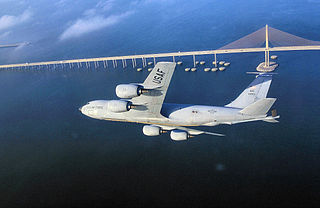
The 91st Air Refueling Squadron is part of the 6th Air Mobility Wing at MacDill Air Force Base, Florida. It operates the Boeing KC-135R Stratotanker aircraft conducting air refueling missions.

The 92d Air Refueling Squadron is a squadron of the 92d Air Refueling Wing's 92d Operations Group, stationed at Fairchild Air Force Base, Washington.

The 96th Air Refueling Squadron was a unit of PACAF's 15th Wing at Joint Base Pearl Harbor-Hickam, Hawaii in partnership with the 203rd Air Refueling Squadron and 154th Maintenance Group of the Hawaii Air National Guard. It was inactivated on 3 September 2015.

The 384th Air Refueling Squadron is an active United States Air Force unit, stationed at Fairchild Air Force Base, Washington, where it is assigned to the 92d Operations Group and operates the Boeing KC-135 Stratotanker aircraft conducting air refueling missions.

The 905th Air Refueling Squadron is an inactive United States Air Force unit. It was last active as an element of the 319th Air Refueling Wing at Grand Forks Air Force Base, North Dakota, where it operated Boeing KC-135 Stratotanker aircraft. The squadron was inactivated at the end of 2010 when the 319th wing lost its operational mission and became the 319th Air Base Wing.

The 22d Expeditionary Air Refueling Squadron is a provisional United States Air Force unit, assigned to United States Air Forces Central. It is engaged in combat operations as part of the Global War on Terrorism in Afghanistan. Its current status and location are undetermined.

The 97th Operations Group is a United States Air Force unit assigned to the 97th Air Mobility Wing of Air Education and Training Command. It is stationed at Altus Air Force Base, Oklahoma.
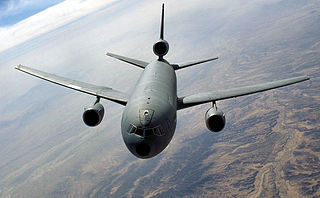
The 305th Operations Group is a United States Air Force unit assigned to the 305th Air Mobility Wing. It is stationed at Joint Base McGuire-Dix-Lakehurst, New Jersey.

The 509th Weapons Squadron is a United States Air Force unit. It is assigned to the USAF Weapons School, stationed at Fairchild Air Force Base, Washington.

The 71st Air Refueling Squadron is an inactive United States Air Force unit. It was last assigned to the 458th Operations Group at Barksdale AFB, Louisiana where it was inactivated on 1 April 1994.

The 90th Expeditionary Air Refueling Squadron is a provisional United States Air Force unit. Until March 2013, it was assigned to the 385th Air Expeditionary Group at Incirlik Air Base, Turkey. It then departed for an undisclosed location in Southwest Asia.

The 310th Expeditionary Air Refueling Flight is a provisional United States Air Force unit. The flight was last active as the 310th Air Refueling Squadron in October 1994, when it was assigned to the 380th Air Refueling Wing at Plattsburgh Air Force Base.
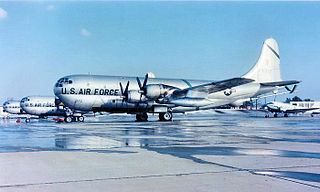
The 641st Bombardment Squadron was an inactive United States Air Force unit. After training with Douglas A-20 Havocs in the United States the squadron deployed to the European Theater of World War II, where it engaged in combat until the Surrender of Germany. It was last assigned to the 409th Bombardment Group at Westover Field, Massachusetts, where it was inactivated on 7 November 1945.
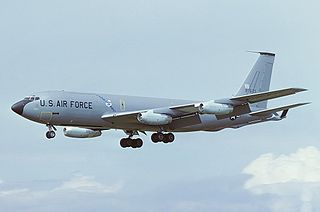
The 380th Air Refueling Squadron is an inactive United States Air Force unit. It was last assigned to the 380th Bombardment Wing at Plattsburgh Air Force Base, New York where it was inactivated on 30 September 1995.

The 902d Expeditionary Air Refueling Squadron is an inactive United States Air Force unit. It was last assigned to the 70th Bombardment Wing at Clinton-Sherman Air Force Base, Oklahoma, where it was inactivated on 31 December 1969.





